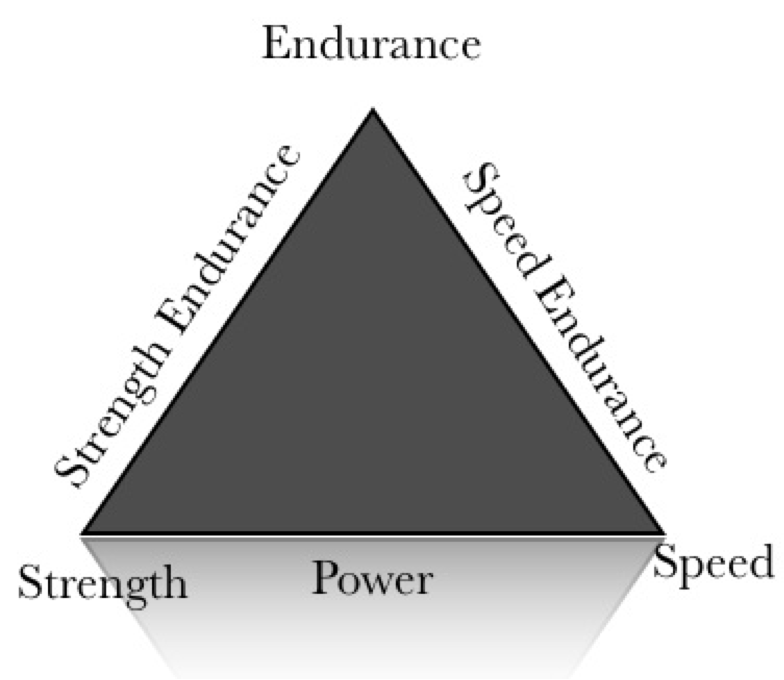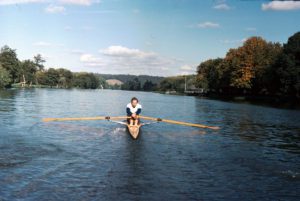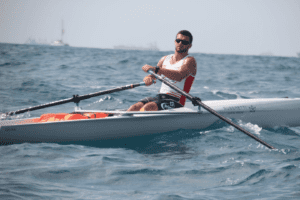How to become a stronger rower: Part 2. Forms of strength. The second part of our series about the different types of rowing strength and how to train them!
Which kind of rowing strength is required?
First of all, it is necessary to ask what kind of strength rowing requires. Strength is usually roughly categorized in to speed or explosive strength, maximal strength and strength endurance. Of these three, strength endurance, which can be described as the ability to produce a certain amount of force for several repetitions, or for an extended period of time. Rowing requires the ability to produce force for 200 to 300 repetitions continuously, or in terms of time for about 6 to 8 minutes. Therefore, rowing clearly meets the criteria of strength endurance.
What about explosive strength and maximal strength?
They are also required in rowing, but to a much lesser extent. Maximal strength is required at the start, where rowers have to produce large amounts of force (around 1000 N for international level rowers) in order to get the boat moving. Explosive strength, the ability to produce force quickly, helps in achieving acceleration to the stroke.
The question then is, how to optimally develop these areas of strength. As strength endurance is the most important of the three, I will start by covering the most effective ways of developing it. Without going into too much detail, there are two major ways of developing strength endurance. The first is to stress the muscle over a sustained period of time, or for a large number of repetitions thus developing its aerobic and anaerobic energy pathways. This aspect is, of course, practices daily by rowers who perform hundreds and thousands of repetitions of the rowing stroke.
The second way to develop strength endurance at a certain absolute level of force is to make that absolute level a smaller relative effort. For example, if person A can squat 100kg, a 50kg squat represents 50% of his maximum strength, whereas for person B who can squat 200kg, 50kg represents only 25% of his maximum strength. Therefore, despite the absolute level of force (50kg) is the same, the relative effort required is much smaller for person B. Therefore training maximum strength, is crucial in improving strength endurance.
The basics for the beginner
For beginner rowers who do not have a lot of background in strength training I suggest focus on maximal strength as a way to build up all aspects of strength. As I outlined previously, maximal strength helps in dragging strength endurance to a higher level. It also lays the basis for training explosive strength, as a certain base level of strength is required before successful explosive strength training can be programmed.
In essence, training maximal strength is simple: one simply needs to lift progressively heavier weights over time. However, caution should be taken as mistakes can be made. The biggest developments in maximal strength can be obtained through heavy multijoint movements. For rowers these would be squats, deadlifts and pull-ups or chin-ups. The first requisite of sustainable and safe development in these lifts is establishing correct lifting technique. Finding someone able to advice in learning these lifts is therefore of great priority!
For beginners, maximal strength can successfully be developed through the mid-range of 5 to 10 repetitions per set and 2 to 5 sets per lift. The bigger the lift (ie. squat and deadlift) the lower the rep range should be. Many coaches advice 10 to 20 repetitions for lifts such as squat and deadlift in order to engrain proper movement pattern. However, I take exception to this as I have yet to see a novice in weightlifting perform such extended sets with good technique. I would rather advice fewer repetitions (5), where all are performed with correct technique.
On the basis of the principles and ideas presented in the first two posts, I suggest focusing on developing maximal strength in big lifts, which resemble the movement of the rowing stroke, progressively seeking to increase the weight in these. In the next article I will concentrate a bit more on strength training from the perspective of individuality and specificity, giving advice about how to choose the right exercises for you.
A guest post by Elias Lehtonen.








